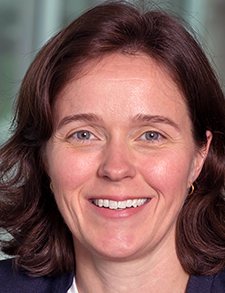
Dr. Thompson
In February of 2019, I wrote The Amazing Work We Get To Do 10 months before the first case of COVID-19 at Providence Everett in Washington was diagnosed. In that article, I wrote of the evolving health care landscape in our country, the opportunities ahead, and how “our hospital medicine workforce is innovative, diverse, tech-savvy, and poised for leading.”
It’s unreal to think about what’s happened since then. On a personal note, I moved back to my home state in the Northwest to develop an acute care division. Within a year, it was facing previously unimaginable events head-on. We were at the epicenter of a pandemic in the U.S. There was a new disease. We were afraid. Did we have enough N95s? Would these protect us? How could we help our patients? Were there enough ventilators? Would we have to just watch patients die? And at the ends of our days, when we came home weary, we wondered if we were risking our families’ lives.
We all experienced it. We saw the death. We saw our teams suffering trying to care for people with what felt like few resources. Across the country, we saw halls lined with ventilated patients. We saw colleagues fall sick with COVID-19. One colleague, exposed at work, transferred in with severe COVID-19. He almost died. Through some miracle (and possibly extracorporeal membrane oxygenation), he managed to survive. Others did not.
In the chaos, we turned to innovation. Could we prone a patient to improve outcomes? Was this similar to acute respiratory distress syndrome? Would steroids help? Could we monitor patients remotely to prevent admissions and reduce overcrowding? We built teams and infrastructures and innovative staffing models to brace for volumes beyond capacity. We talked of rationing resources and readied models for the day they would be needed. We deployed remote home oxygen monitoring to avoid hospitalization in lower-risk COVID-19 patients. We became experts at consent for emergency use authorization. Our colleagues led trials to evaluate new treatments. My teams published on decreasing COVID mortality over time and on the duration of treatment with remdesivir.
COVID-19 mutated and hit from another direction—sowing more fear in our hearts and minds.
Political voices influenced health care, telling us how to practice, how to treat, and whether to even be concerned. Celebrated as heroes early on, we were accused, by some, of being government drones refusing to treat with ivermectin or injecting nano-bots into the arms of our communities. One colleague’s team faced people accusing them of prescribing fake therapies and refusing to provide appropriate care in their lobby. On the radio, some of us were berated daily. We suffered. We struggled to find our footing. Some of us lost our way. We lost our tempers. We lost our perspective. We lost hope. We lost a colleague to death by suicide. He was not the only one to fall to the stress of our profession.
Through it all, our teams kept showing up. We covered for each other; we took extra shifts. We continued our tradition of innovation. We installed hospitalist robots to spread our clinicians across the country, harnessing some of the most efficient models of care imaginable. Where there were no robots, we used iPads. We leveraged telerounding—seeing patients in ICUs across the country, rounding from home while in isolation, and attending to patients in pop-up COVID-19 hospitals. We developed teams across competitor health systems, prioritizing serving patients. We developed geographic care models on units and in isolated hospitals to treat COVID-19—to create transitions units when discharges seemed impossible. We dissolved archaic med-staff rules preventing advanced practice providers from working independently at top-of-license. We learned to come together on Zoom, Teams, and webinars. We learned how to unmute.
What made us the profession poised to lead the U.S. into the future of health care in 2019 is exactly what made us the profession to lead through 27 months of the pandemic. For all the negatives we have experienced, for all the pain we have endured, we stand today altogether stronger.
Our communities and our country see us now; they understand our value. Being a hospitalist continues to be about serving people, connecting, and improving care. Touring #HowWeHospitalist, it is clear we work hard, we teach, we care, we have pride in our work, we advocate for others, we serve our communities, and we are talented, tireless, dedicated. Whatever comes next, we are the teams that will lead into the future.
Beautiful article full of pain, exhaustion, sorrow, determination, grit, gratitude and strength. Thank you for sharing it. And thank you to all of the hospitalists that have shown up and continue to show up every day to serve the people everywhere. We see you and you are appreciated!
Beautifully written.